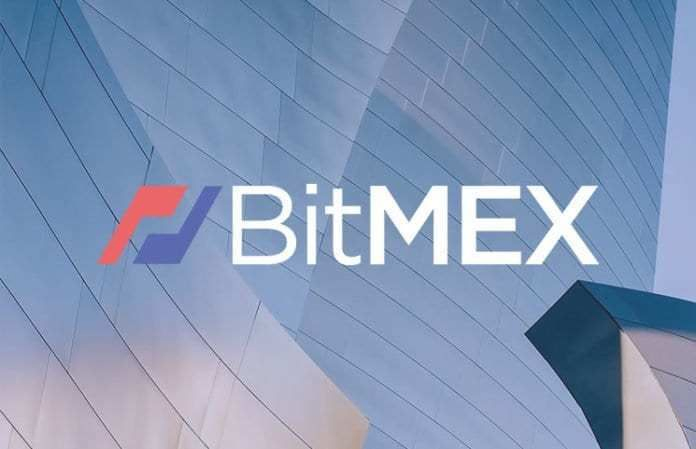Leverage trading is also known as margin trading. It is the practice of trading with borrowed funds. In this case, you trade with leverage that you are putting down for the trade is always a fraction of the needed amount. With leverage trading, a trader is in a position to increase profits and some losses from a shift in the value of an asset. For this reason, margin trading can be classified as a double-edged sword.
When you leverage to trade, you can access a higher buying power. Note that different trading platforms have diverse limits on the amount of leverage available. The leverage amount available is affected by the initial amount and the maintenance margin. While margin trading with cryptocurrencies, you have two options. The first option is going long. This approach entails purchasing a contract with surety that it will rise in value. Another option is going short. Here a contract is sold because a trader believes the value will drop.
Leverage Trading With BItMEX

We have a number of cryptocurrency exchanges offering leverage trading services. One such exchange is BitMEX. BitMEX is among the leading exchanges that have been around since 2014. BitMEX offers traders with leverage of up to up to 100:1. The exchange users get a chance to amplify their gains and potential losses. The exchange allows multiple cryptocurrencies for the experiment. However, all fund payments are in Bitcoin. As a result, all withdrawals and deposits will be made with Bitcoin.
BitMEX Leverage Trading Contracts
BitMEX has two types of contracts, namely a futures contract and a perpetual contract. Future contracts refer to an agreement between a seller and a buyer to exchange an asset in the future for an agreed price. BitMEX futures contracts allow investors to make money even when the price of cryptocurrencies drops.
A perpetual contract has some similarities to a futures contract. However, it lacks a specific date in the future at which it will expire. All perpetual contracts are subject to continuous renewal. The contract traces the price of the underlying asset and is supposed to be less volatile than conventional futures contracts. This type of contract is ideal for long term investors.
How To Start With BitMEX Leverage Trading
To get started with BitMEX leverage trading, you need to create an account with the exchange. Provide a username, email and create a strong password. You will verify the email and go through the two-factor authentication process for security purposes. In the next stage, deposit funds into your account by clicking on the ‘Account’ button then ‘Deposit’ button from top of the screen. You can scan a QR code or deposit funds through the wallet address.
You will then click on the ‘Trade’ section. Select the cryptocurrency you want to sell or buy. After settling on a given asset, enter details of your position. Choose the type of order you wish to place from the left side of the screen. Enter the quantity of your trade. The next step entails setting your leverage for your position. The leverage can be 5x or 10x.
You will then review the details for the transaction. The details for review are Quantity and Cost. The cost section shows the maximum amount you can lose on the position if the market moves against you. Lastly, the ‘Order Value’ shows the value of your position in XBT. Under the last step, you can click on the ‘Buy Market’ tab if you are going long. In case you are going short, click on ‘Sell Market’. An order confirmation screen will pop up where you will once again review the details and click on either ‘Buy’ or ‘Sell’.
How to Avoid Liquidation
BitMEX traders can use the Cross Leverage model to avoid liquidation. Cross Leverage works by spending the entirety of your account’s balance. Through this process, you eliminate the risk of losing your collateral. Furthermore, you end up creating a much larger personal risk, as you jeopardize your ability to see a return on your investment. Cross leverage on Bitmex is shared among two open positions. The positions must be entirely separate from one another in order for the trade to occur. Additionally, one of the two will need to draw more than the other in order to avoid total liquidation. Cross leverage is an effective way to minimize the risk associated with your investment. This margin method is useful for users who are hedging existing positions and also for arbitragers that do not wish to be exposed on one side of the trade in the event of a liquidation.
BitMEX also has an isolated margin. This model allows traders to select the amount of money in their wallet that should be used to hold their position after an order is placed. Sometimes BitMEX can resort to Auto deleveraging. It is a system by BitMEX to liquidate a trader’s position. If a position is liquidated by the exchange, it is taken over by BitMEX automatically using the software. The price where a position will be closed is the stated bankruptcy price given at the time the order was initiated.
Note that decreasing your leverage without the borrowed funds in your account is equal to preemptively yielding your collateral. Therefore, lowering your leverage without sufficient funds will liquidate it, and then remove you from the market. On the other hand, if you are increasing your leverage, you will incur minor fees. BitMex leverage fees are often proportionate to your original leverage.
Key Tips To Manage Risks
Leverage trading is complex and risky. To be on the safe side, implement the following tips to avoid losing your funds.
Make use of the BitMEX practice feature. BitMEX comes with a practice environment that allows traders to familiarize themselves with placing, executing and canceling orders while interacting with a simulated marketplace. Utilize this feature by doing lots of different small trades in various market conditions to get the hang of things.
Always start small. As a beginner, deposit a small amount for leverage trading. The amount should be the one you are comfortable with losing. Starting small minimizes losses in the event you place the wrong trade or the market moves against you.
Another tip to consider is limiting your leverage. Do not fall prey to the potential of maximum returns available. This is a common challenge for beginners. To reduce the risk, regulate the leverage amount.
Focusing on a specific market will be vital in helping you understand price movement and trends. If your attention is divided into several different markets, you might fail to take full opportunity of the available chances.
Always ensure you understand your order before you place it. The last section of placing an order is reviewing the order screen. Review it carefully before submitting. Most importantly, pay special attention to the ‘Cost’ section since you will be able to see the amount you lose in the course of leverage trading.
Lastly, the most vital tip is to reconsider your relationship with leverage trading if you are new to cryptocurrencies. Newcomers are not in a better position to understand the subtleties of the market. You will, therefore, need to gain a comprehensive understanding of the many different currencies before engaging in leverage trading.
Conclusion
With the above guide, using BitMEX leverage trading should be smooth. Note that the process is risky. Always start small to avoid making extreme losses in the event the market goes against you. To become good at leverage trading, you need patience and learn the way the market works.
Support Zerocrypted
- Trade on Bitmex
- Trade on Binance Jersey
Subscribe to our Newsletter to be a part of our future $1,000 per month contests.


